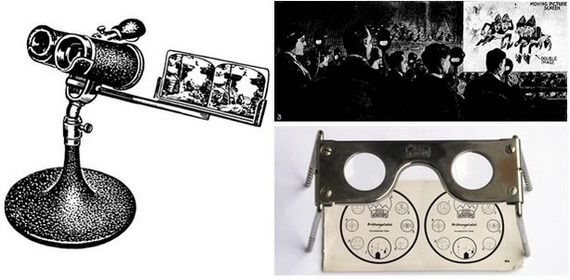With all the talk of 3D televisions and Nintendo's upcoming 3DS, it looks like 3D-gaming is on track to becoming The Next Big Thing in the gaming community. But 3D gaming is nothing new. In fact, it's almost as old as gaming itself. And while the future of 3D at home looks bright, the past is littered with failed experiment, cheap glasses and more eye-strain induced headaches then you can possibly imagine. While we touched on gaming's iffy history with 3D before, here's an in-depth look at some of gaming's 3D highlights and pitfalls.
Anaglyphic Glasses
When most people think "3D" they still think of the classic red and blue glasses that were used for 3D movies back in the 50s. Gamers got a taste of them some 30 years later thanks to Square, who released the only two games for the NES to use anaglyphic glasses: 3-D World Runner and Rad Racer. Of the two, World Runner takes greater advantage of the third plane, with a constant barrage of enemies and bullets flying directly at the screen (imagine Space Harrier). For Rad Racer it seemed more like a gimmick, which wasn't at all needed considering how great that game was on its own. Both games also allowed you to turn the 3D off, a Godsend considering the headaches that anaglyph 3D can cause for many people.
Despite the medium's limitations, anaglyph 3D is still around, surprisingly enough, and still makes the occasional gaming appearance. Sly 3: Honor Among Thieves featured 3D sections that required the glasses. Even more recently, Toy Story Mania! and Skate 2 gave players the option of slapping on the ever-stylish red and blue specs for some retro-3D goodness.
Orb-3D, a little known NES title by Hi-Tech, also used 3D glasses, but it used a different kind of glasses that avoided the red/blue problem. However, Orb-3D was pretty awful, so while the 3D was an improvement, you'd have to look past some pretty lousy gameplay to appreciate it.
SegaScope 3-D
While NES users were struggling in the slum of cheap paper frames and red/blue migraines, Sega was blowing Master System owners away with the SegaScope 3D, which used high-end stereoscopic glasses to create a vivid, full-color 3D effect. About the only downside to the device was that you had to plug it into your Master System directly via a slightly too short cable, requiring you to sit pretty close to the system. Still, it was shockingly impressive for the time, and if you're a collector with an original Master System (it doesn't work on the Master System II) it's worth checking out. Sure, only eight 3D compatible games were ever made using the system, but they included exclusive versions of Space Harrier, Out-Run, Missile Defense and Zaxxon! Systems similar to Sega's were used on home PCs in the 90s, but support for them was extremely limited, and never really caught on.
“Hologram” games
Much-hyped when they came out, Sega also had a hand in these oddities, which literally used mirrors to create the illusion of a 3D “hologram” coming out of the arcade cabinet. Only two games using the system ever made it to arcades. The first, called Time Traveler was a Dragon's Lair style FMV game about a time traveling cowboy, and was about as appealing as it sounds. The other was Holosseum, which was a more traditional fighting game. Unfortunately, Holosseum was one of the worst fighting games ever and was promptly buried. The illusion of 3D was actually pretty impressive, though, and the technology probably could have stuck around a little longer if the games weren't so horrible.
Virtual Boy
Finally, we can't forget the poor Virtual Boy, Nintendo's beaten and abused red-headed stepchild. The “portable” system was a gigantic failure at launch, and when people weren't mocking the ugly design and poor controls, they were recoiling in horror at the atrocious red-shaded graphics that created headaches rivaling those caused by traditional 3D glasses. What's forgotten in all this hate is that the 3D effect itself was actually pretty good; games had a clear sense of depth and the graphics, once you got past the monocular color scheme, were decent enough. Only 14 games ever made it to America for the Virtual Boy, and those, along with the much-maligned system, are now collector's items.
Mario Tennis on the Virtual Boy
Any Game Rant readers want to share their 3D gaming experiences? Anything we missed?

